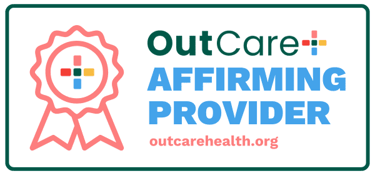From Codependency to Interdependence: Shifts Toward More Fulfilling Relationships
Strong relationships require clear boundaries. If saying no feels impossible or other people’s emotions dictate your own, this is what you need to know.
COUPLE THERAPYRELATIONAL THERAPY


In relationships, it can be easy to lose sight of your own needs while focusing on others. You might sacrifice your boundaries, take on someone else’s burdens, or feel responsible for their happiness. This pattern is often rooted in a concept called codependency. It’s a term that may sound familiar but is often misunderstood. So, let’s explore what codependency really means, how it shows up, and what steps you can take to cultivate healthier, more fulfilling relationships.
What Is Codependency?
Codependency can be understood as a pattern of prioritizing other people’s needs and emotions over your own, often to your own detriment. It’s not an official diagnosis in the DSM-5, but it’s a concept recognized by therapists and self-help communities alike. As Melody Beattie, author of Codependent No More, explains, codependency often involves letting yourself be overly affected by someone else’s behavior and trying to control or fix them in response.
For many, codependency manifests as a blurring of boundaries—the sense that your “dance space” has merged with someone else’s. You might feel responsible for their happiness, constantly say “yes” when you mean “no,” or struggle to let go of the urge to rescue or fix them. While it can stem from genuine care and compassion, this pattern often leaves you feeling resentful, drained, or lost.
Signs of Codependency
Recognizing codependency in your own life is the first step toward change. Here are some common signs:
Caretaking Instead of Caring: You may feel compelled to “rescue” others or solve their problems, even at great personal cost.
Difficulty Setting Boundaries: You struggle to say no, even when saying yes means neglecting your own needs.
Over-Responsibility for Others: You take on others’ emotions or problems as if they were your own.
Neglecting Self-Intimacy: Your focus on others leaves little room for understanding and honoring your own feelings, needs, and desires.
How Does Codependency Develop?
Codependency often has roots in early life experiences. Growing up in a family where emotions were suppressed, boundaries were unclear, or caretaking was a survival strategy can lead to these patterns in adulthood. Social and cultural factors, such as expectations placed on women or caregivers, can also reinforce codependent behaviors.
It’s important to remember that codependency isn’t about blame. It’s about understanding how past experiences shape present behaviors and empowering yourself to make different choices moving forward.
Breaking Free from Codependency
Healing from codependency is a journey of self-discovery, boundary-setting, and self-compassion. Here are some steps you can take to start shifting these patterns:
Practice Observation and Awareness
Start by noticing your thoughts, feelings, and behaviors in relationships. Ask yourself, “Am I overextending myself? Am I acting out of obligation or fear rather than genuine care?” Awareness is the foundation of change.Differentiate Caring from Caretaking
Caring involves empathy and support, while caretaking often means taking responsibility for someone else’s emotions or actions. Reflect on whether your actions are helping or enabling others, and adjust accordingly.Set Boundaries
Boundaries are essential for healthy relationships. Practice saying no when you need to and communicating your limits clearly. For example, instead of agreeing to a late-night call when you’re exhausted, offer a specific time to talk when you’re available.Cultivate Self-Intimacy
Spend time reconnecting with yourself. What do you enjoy? What do you need? Journaling, mindfulness, and therapy can help you rediscover your identity and prioritize your well-being.Embrace Vulnerability
Building healthy relationships requires being open and honest about your feelings. Vulnerability can feel risky, but it’s also the foundation for genuine connection.
The Role of Dysfunctional Family Roles
Understanding the roles we played in dysfunctional families can shed light on codependent patterns. Family therapist Sharon Wegscheider-Cruse identified five roles that children may adopt to cope with family dysfunction:
Caretaker (or Enabler): Takes responsibility for others’ emotions and often neglects their own needs.
Scapegoat: Becomes the “problem” child, blamed for the family’s issues and often acting out as a result.
Lost Child: Withdraws and avoids conflict by isolating themselves or focusing on solitary activities.
Hero: Strives for perfection and success to mask the family’s dysfunction.
Mascot: Uses humor or charm to diffuse tension and bring attention away from deeper issues.
These roles can persist into adulthood, shaping how we relate to others and view ourselves. Recognizing these patterns can help you break free from limiting behaviors and move toward more rewarding dynamics.
The Challenge of Receiving
For those who struggle with codependency, receiving can feel uncomfortable or even unsafe. As Melody Beattie shared, “Receiving came with a cost. If we were going to receive, there was a pretty big cost with it. And we don’t want to be that vulnerable again.” Healing requires challenging these beliefs and allowing yourself to accept care and support without fear or guilt.
The Role of Therapy in Shifting From Codependency
Therapy can provide a supportive space to explore the roots of codependency and develop new ways of relating to yourself and others. A therapist can help you identify patterns, set goals, and practice self-compassion as you work toward healthier relationships.
The Role of Interdependence
Interdependence offers a healthy alternative to codependency. It’s the balance between maintaining your independence while being connected to others in a mutually supportive way. In an interdependent relationship, each person has a strong sense of self and takes responsibility for their own needs, emotions, and growth. This creates space for trust, mutual respect, and true intimacy.
Interdependence is characterized by:
Healthy Boundaries: Both individuals know where they end and the other begins, allowing for a balance between connection and individuality.
Emotional Reciprocity: Both partners give and receive care without overextending themselves or feeling resentment.
Support Without Overreliance: Each person can lean on the other without sacrificing their own autonomy.
Moving toward interdependence involves self-awareness, communication, and the willingness to challenge old patterns. It’s about embracing the idea that you and your partner are two whole individuals coming together to create something greater—a shared life rooted in respect and collaboration.
Moving Toward Interdependence
The ultimate goal of shifting away from codependency is to build interdependent relationships. These are connections where both people maintain their independence while supporting each other as equals. Interdependence allows for mutual respect, shared responsibility, and genuine intimacy—a dance where each person holds their own frame while moving together in harmony.
Final Thoughts
If you see yourself in these descriptions, know that you’re not alone and that change and fulfillment is possible. Healing from codependency is a journey that takes time, patience, and courage. But with awareness, self-compassion, and support, you can create a life where your needs and boundaries are honored, and your relationships are grounded in mutual care and respect.
Therapy is a powerful tool for navigating this journey. If you’re ready to take the first step, I’m here to help. Together, we can explore your experiences and work toward the healthy, fulfilling connections you deserve.





